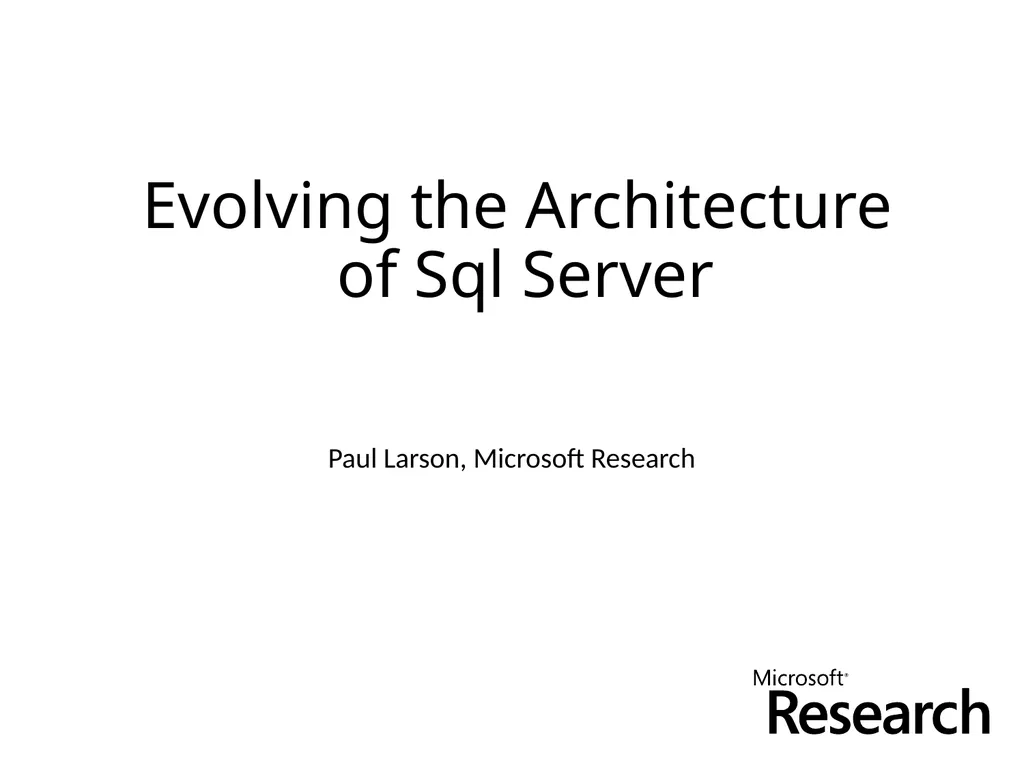
Evolving the Architecture of Sql Server Paul
Author: natalia-silvester | Published: 2025-05-28
Description: Evolving the Architecture of Sql Server Paul Larson, Microsoft Research Time travel back to circa 1980 Typical machine was VAX 11780 1 MIPS CPU with 1KB of cache memory 8 MB memory (maximum) 80 MB disk drives, 1 MBsecond transfer rate
Download Presentation
Download the PPT/PDF: Download
Transcript:
Loading transcript…